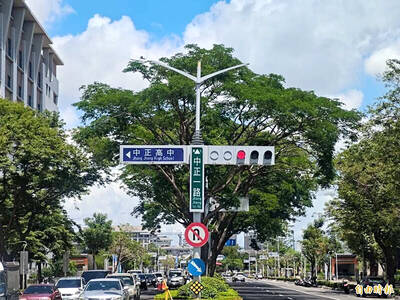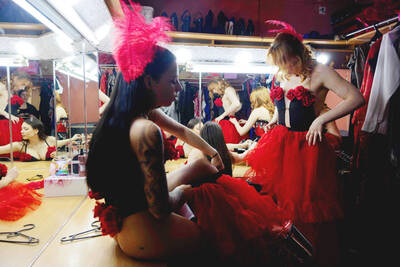Six months ago the style prognosis for the northern hemisphere summer was pretty dire. The world's fashion experts spoke with one voice and announced that this season, the hemlines would be short. Not just mid-thigh short, but excruciatingly, don't-bend-over short.
But now, after a couple of sunny weekends, the shopping landscape looks rather different. Those lofty diktats from the high-end designers, those predictions from the likes of Vogue.com, are being rudely ignored by the British shoppers anyway. Despite having almost no presence on the international catwalks, a new hem length is fast gaining dominance. The high street has fallen for full-length and fabulous. It is the maxi-length dress (or even skirt), in all its floor-skimming, empire-line, thigh-friendly glory, that is set to be the cult buy of the summer.
Reports of maxi-dress demand outstripping supply are rife on the high street. At Miss Selfridge, a floral 70s-style maxi-dress sold out in a day. At Laura Ashley, a reissue of a maxi-dress the label first designed in the 60s sold out on its Web site in just 24 hours, and at ASOS.com, the virtual high-street store dedicated to selling clothes similar to those that celebrities have recently worn, "maxi-dress" is currently the site's second most popular search term, only beaten in frequency by the ever popular "Kate Moss."
How could this have happened? How has the maxi-dress crept under the fashion radar? The answer is that the designers got it wrong: they went too short. The super-short tunic dresses on the Chloe catwalk and the much lauded mini-dresses created by Christopher Kane did inspire high-street copies, but those copies only really appealed to the very young and very skinny. For those not blessed with model limbs, the length proved a turn-off. And no amount of advice from the fashion experts was going to make them think any differently.
Then along came maxi-dresses, and suddenly shoppers in search of a new, fashionable summer dress had an alternative — and one with real advantages. Maxi-dresses shout summer, they're hugely flattering, and you don't need to shave or moisturize to wear one. It's no wonder we are buying them by the armload.
Of course it isn't the first time that the fashion industry has whipped itself up into a frenzy over a trend, only to be shafted by plain commonsense. Metal-clad leggings and turbans are two other non-starters this season, and so far no one seems keen to splash out on the "deluxe sportswear" trend.
One eye on the catwalk
"We're not slaves to the catwalk in (the UK)," says Melanie Rickey, fashion news and features editor at Grazia magazine. "Yes, we look at [the catwalk], but it's an outdated idea to believe we follow it completely — we make our own decisions about what to wear. Mini-skirts will still be around, but maxi-dresses are just more forgiving."
Alison Edmond, creative/fashion director at Harper's Bazaar UK, is a long time fan of the maxi-hem. "The maxi is easier to wear for many more women than skimpy short dresses," she says. "I've worn them since I was 16. I'm not blessed with skinny legs, but I always had a tiny waist and a flat stomach, so they were perfect for my shape." She isn't convinced, however, that the success of the maxi-hem will spell complete disaster for the super-short minis. "Women with fab legs will still buy short dresses and they certainly won't look unfashionable," she says, "but this gives consumers twice the choice, which is great."
Retailers aren't daft, of course. Edmond believes that the high-street designers' use of the maxi-length was a contingency plan designed to hoover up all the women who wouldn't buy minis — and that has played a part in the resurgence of the maxi-hem. "I would imagine that last season's bum-skimmers didn't sell and retailers decided it was wiser to give women more options," she says. Rickey believes that the sudden success of the maxi is proof that the buyers for mid-market high-street shops are often more in touch with customers than high-end designers. "They know what women want," she says.
As with so many trends, celebrity patronage has undoubtedly played its part. At ASOS.com, Oshodi says that "we predicted the look because all the celebs have been wearing it since last summer, like Jessica Alba and Paris Hilton. The buying team came back from LA where the maxi-hem is a bit of a uniform at the moment." Edmond concurs: "It can be quite an LA look. Wear your vintage maxi-dress with your flat Jimmy Choos and you're away."
Yasmin Yusef, creative director at Miss Selfridge, is a proud wearer of the label's sell-out maxi-dress wearer. "For our buyers the idea came from watching how women were wearing vintage maxi-dresses at festivals last year."
Whatever kicked the maxi trend off, it's the forgiving length that will (probably) make it the look of our summer. After all, there aren't many styles of dress that are as universally flattering.

One of the most important gripes that Taiwanese have about the Democratic Progressive Party (DPP) is that it has failed to deliver concretely on higher wages, housing prices and other bread-and-butter issues. The parallel complaint is that the DPP cares only about glamor issues, such as removing markers of Chinese Nationalist Party (KMT) colonialism by renaming them, or what the KMT codes as “de-Sinification.” Once again, as a critical election looms, the DPP is presenting evidence for that charge. The KMT was quick to jump on the recent proposal of the Ministry of the Interior (MOI) to rename roads that symbolize

On the evening of June 1, Control Yuan Secretary-General Lee Chun-yi (李俊俋) apologized and resigned in disgrace. His crime was instructing his driver to use a Control Yuan vehicle to transport his dog to a pet grooming salon. The Control Yuan is the government branch that investigates, audits and impeaches government officials for, among other things, misuse of government funds, so his misuse of a government vehicle was highly inappropriate. If this story were told to anyone living in the golden era of swaggering gangsters, flashy nouveau riche businessmen, and corrupt “black gold” politics of the 1980s and 1990s, they would have laughed.

It was just before 6am on a sunny November morning and I could hardly contain my excitement as I arrived at the wharf where I would catch the boat to one of Penghu’s most difficult-to-access islands, a trip that had been on my list for nearly a decade. Little did I know, my dream would soon be crushed. Unsure about which boat was heading to Huayu (花嶼), I found someone who appeared to be a local and asked if this was the right place to wait. “Oh, the boat to Huayu’s been canceled today,” she told me. I couldn’t believe my ears. Surely,

When Lisa, 20, laces into her ultra-high heels for her shift at a strip club in Ukraine’s Kharkiv, she knows that aside from dancing, she will have to comfort traumatized soldiers. Since Russia’s 2022 invasion, exhausted troops are the main clientele of the Flash Dancers club in the center of the northeastern city, just 20 kilometers from Russian forces. For some customers, it provides an “escape” from the war, said Valerya Zavatska — a 25-year-old law graduate who runs the club with her mother, an ex-dancer. But many are not there just for the show. They “want to talk about what hurts,” she